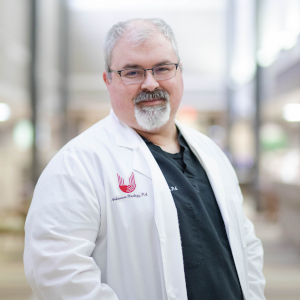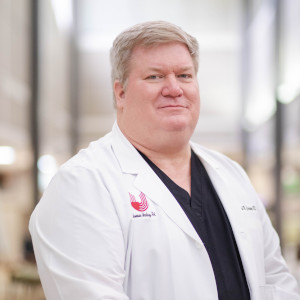Overactive bladder (OAB) affects both men and women, disrupting daily routines and wellness. At Arkansas Urology, we provide comprehensive treatment and individualized care to help patients regain confidence and improve their quality of life. Our experienced team offers compassionate support and advanced solutions for bladder health, blending expertise with personalized attention.
Overactive Bladder Treatment Arkansas
What Is Overactive Bladder (OAB)?
Overactive bladder (OAB) refers to a group of urinary issues, including urgency, frequency, and urinary incontinence. It occurs when the bladder’s muscles contract involuntarily, causing a sudden urge to urinate—even when the bladder isn’t full. Millions of people in North America suffer from this condition, often alongside following conditions such as diabetes, stroke, or multiple sclerosis. If you’ve been experiencing symptoms like urgency or leakage, you are not alone. Early diagnosis and care are key.
Symptoms of OAB
Common signs of this condition include:
- Urgent need to urinate
- Frequent urination (more than eight times daily)
- Nocturia (waking at night to urinate)
- Urge incontinence (unexpected leakage before reaching the bathroom)
These symptoms can interfere with work, relationships, and daily activities. Many individuals suffer unnecessarily without realizing effective solutions are available.
Causes of OAB
Causes may include:
- Neurological issues affecting signals between the brain and bladder
- Weak pelvic floor muscles
- Kidney infections or urinary tract infections
- Family history of bladder problems
- Age-related changes
OAB in Women
In women, OAB may result from:
- Pregnancy and childbirth weakening pelvic support
- Hormonal changes during menopause
- Pelvic organ prolapse
- Recurrent urinary tract infections
Pelvic floor disorders can also contribute to urgency and frequency in women, and can come with urinary incontinence. Addressing pelvic support and hormonal balance is often part of a woman’s care plan.
OAB in Men
In men, OAB is often linked to:
- Prostate enlargement (benign prostatic hyperplasia)
- Bladder outlet obstruction
- Post-prostate surgery changes
These factors can lead to incomplete bladder emptying, higher frequency, and accidents. Individualized treatment considers these male-specific causes.
Diagnosis of Overactive Bladder (OAB)
In men, OAB is often linked to:
- Prostate enlargement (benign prostatic hyperplasia)
- Bladder outlet obstruction
- Post-prostate surgery changes
These factors can lead to incomplete bladder emptying, higher frequency, and accidents. Individualized treatment considers these male-specific causes.
Treatment Options for Overactive Bladder (OAB)
Arkansas Urology offers a wide variety of treatment options tailored to each patient. We begin with conservative therapies and progress to advanced solutions as needed, ensuring each step prioritizes comfort and results.
Behavioral Therapies
Our first line of care often includes:
- Bladder training to help increase bladder capacity and delay urgency
- Avoiding bladder irritants like caffeine and alcohol
- Kegel exercises (particularly beneficial for women to strengthen pelvic muscles)
- Biofeedback therapy for improving pelvic floor control
These therapies empower patients to actively manage symptoms with lifestyle adjustments that support long-term improvement.
Medications
When behavioral therapies alone aren’t enough, Arkansas Urology may recommend medications such as:
- Anticholinergic drugs like Detrol-LA and Ditropan-XL to reduce involuntary bladder contractions
- Beta-3 adrenergic agonists to relax the bladder muscle and improve storage capacity
Our expertise ensures medication plans are tailored to minimize side effects while improving control.
Advanced Therapies
For patients whose symptoms persist despite initial treatments, we offer advanced therapies that deliver effective relief:
- Botox injections directly into the bladder wall to calm overactivity
- Sacral nerve stimulation with InterStim, an implantable device that sends mild electrical signals to nerves regulating bladder function
- PTNS (Percutaneous tibial nerve stimulation), a minimally invasive nerve therapy that can be performed in-office
- Surgical options for severe cases, such as bladder augmentation to increase capacity and reduce urgency
At Arkansas Urology, we work closely with every individual to create a treatment plan that combines therapies as needed for maximum results. Our commitment to innovation and expertise means you receive proven, effective care every step of the way.
Gender-Specific Treatment Considerations
Treatment plans differ for men and women. Women may benefit from pelvic floor rehabilitation and hormone-based strategies. Men may require interventions targeting prostate health or post-surgical bladder adjustments. Our team focuses on care tailored to each individual’s needs, ranging from conservative management to advanced procedures.
Why Choose Arkansas Urology for OAB Treatment
When it comes to treating OAB, you deserve a care team with unmatched expertise and dedication. Arkansas Urology stands apart by offering:
- A trusted team of urologists specializing in OAB care
- State-of-the-art diagnostic tools and treatment technologies
- Personalized care plans tailored to each individual
- Compassionate support to guide you every step of the way
Our providers are committed to delivering the highest standard of urologic care. Whether you’re newly diagnosed or seeking solutions after years of symptoms, Arkansas Urology is your partner for long-term relief.
Schedule Your Appointment Today
Don’t let OAB control your life or hold you back from the activities you enjoy. Arkansas Urology makes it easy to get the expert care you deserve. Our trusted team is ready to guide you through every step of diagnosis, treatment, and long-term management. We’ve helped thousands of patients reclaim their confidence and daily comfort—now it’s your turn.
Contact Arkansas Urology today to schedule your appointment and start your path toward better bladder health. Relief is possible when you have a dedicated partner in your care. Take the first step toward freedom from urgency, leaks, and disruption. Call us today or request an appointment online with Arkansas’ trusted leader in OAB treatment.






